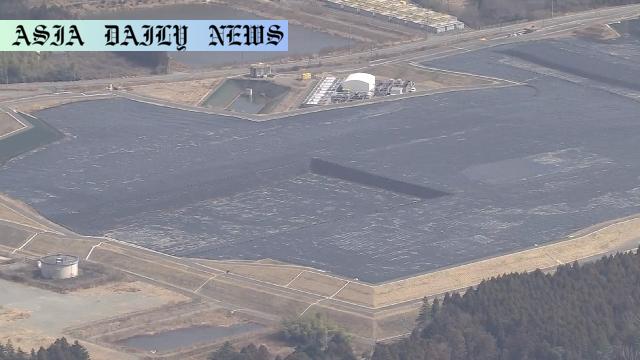Fukushima Soil Reuse: Japan plans to repurpose low-radioactive soil from Fukushima’s 2011 nuclear accident for public projects.
The Japanese government is planning to reuse soil removed during decontamination following the 2011 Fukushima nuclear accident.
The soil will be used in public works projects, with safety standards ensuring radiation exposure remains below 1 millisievert annually.
Tests for safety have been carried out in local areas, while concerns from residents have delayed certain planned usages.
The Prime Minister’s Office project will be the first under the basic policy for soil reuse and final disposal.

Introduction: The Fukushima Soil Reuse Initiative
The Japanese government is undertaking an unprecedented initiative to reuse soil with low levels of radioactivity, which was removed following the 2011 Fukushima Daiichi nuclear accident. After extensive decontamination efforts across Fukushima Prefecture, the displaced soil has been stored in intermediary facilities for years. However, a legal mandate requires the soil to be completely removed from Fukushima Prefecture by March 2045. The government’s approach to repurpose the soil, balancing environmental safety with practical application, marks a bold development in addressing the lingering impact of the nuclear disaster.
Safety Standards: Ensuring Public Health and Safety
To guarantee public safety, the Environment Ministry in Japan has implemented strict guidelines for soil reuse. The proposed safety standards ensure exposure to additional radiation remains below 1 millisievert per year, aligning with international safety benchmarks. Comprehensive tests to determine the safety of the soil have already been conducted in various regions, such as Iitate Village in Fukushima. Demonstrations, including using the soil in flower pots at government institutions, were conducted to monitor public reactions and ensure confidence in the program’s viability.
Pilot Project at the Prime Minister’s Office
The first major step in this program involves utilizing the low-radioactivity soil on the grounds of the Prime Minister’s Office in Tokyo. This decision underlines the government’s commitment to leading by example and securing public trust. The initiative will also serve as a benchmark for future projects, where soil of similar quality could be utilized for public infrastructure projects such as road construction and park landscaping across Japan. By incorporating this project into its basic policy on reuse and final disposal, the government signals its intent to normalize the practice despite existing public resistance.
Challenges Facing the Reuse Program
Although the plan is scientifically grounded, there are notable challenges, particularly gaining the public’s trust and acceptance. When the proposal to utilize the soil at the Shinjuku Gyoen National Garden in Tokyo was floated, it encountered significant opposition from local residents who voiced concerns about potential health risks. Addressing such apprehensions requires transparent communication, clearly outlining safety measures and reassurances based on sound science.
Future Implications: Reducing Environmental Waste
The broader implications of the plan go beyond the reuse of nuclear-tainted soil; it opens discussions on sustainable resource management and responsible waste disposal. Should Japan successfully execute this plan to scale, it could potentially serve as a model for other nations grappling with the legacy of nuclear accidents or industrial waste. Furthermore, reducing the volume of soil requiring permanent disposal will ease the environmental strain of storage facilities and mitigate the logistical challenge presented by the 2045 disposal deadline.
Conclusion
The reuse of soil from the Fukushima nuclear disaster represents a bold approach to turning a devastating environmental legacy into an opportunity. Balancing sustainability, scientific rigor, and public acceptance will be critical in realizing this program’s potential. While the challenges are significant, so are the rewards of reduced waste generation and infrastructure development. The Japanese government’s leadership in implementing this program could set international benchmarks for dealing with low-level radioactive materials pragmatically and safely.



Commentary
Addressing Public Concerns
The public’s apprehensions about the reuse of soil from the Fukushima nuclear disaster are understandable. Radiation is an invisible threat, and its long-term health implications can evoke deep concern, especially for individuals living near designated project areas. Transparent communication is key to mitigating this resistance. The government needs to proactively engage with communities, not just through scientific data but also through relatable, real-life examples of safety precautions in action. Building trust in such an ambitious initiative is a critical step that can’t be undermined.
The Balance Between Safety and Sustainability
On the other hand, the reuse of low-level radioactive soil has merit beyond addressing Fukushima’s specific challenges. It demonstrates how nations can tackle large-scale ecological and industrial dilemmas by employing scientific innovation and regulatory oversight. The anticipated reduction in soil destined for permanent disposal facilities represents a crucial environmental benefit. However, achieving this without sacrificing public safety is where the balance lies. Policymakers must tread with caution while pushing for broader adoption of such practices.
A Model for Global Environmental Solutions?
This initiative also holds potential lessons for global environmental practices. Countries looking to manage waste from environmental disasters or industrial activities might find valuable insights from Japan’s approach. By rethinking waste as a reusable resource, the Fukushima soil reuse program could inspire innovations in waste management policies worldwide. However, its success will depend on not only efficient implementation but also addressing the ethical, logistical, and societal dimensions of its execution.
Conclusion
The Japanese government’s decision to repurpose Fukushima soil signals a pragmatic yet cautious approach to a problem of national and global significance. The initiative’s success will depend on rigorous safety monitoring, proactive public engagement, and international collaboration. If executed thoughtfully, this plan has the potential to transform a legacy of environmental disaster into one of scientific ingenuity and resilience.